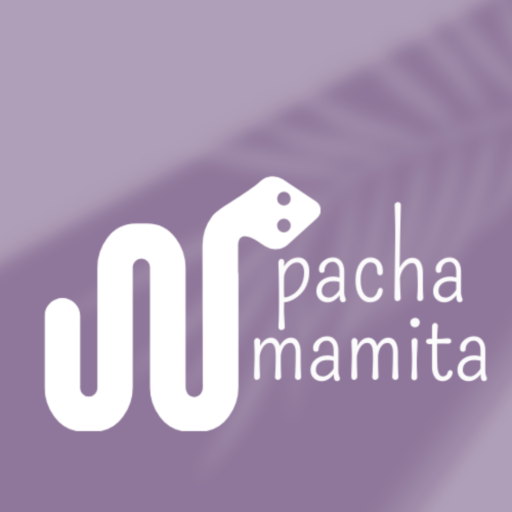By Melissa Breyer.
Textile production is one of the dirtiest industries in the world. The main reasons are the damage that cotton plantations and synthetic fibre production cause to the environment, coupled with the outdated methods used in dyeing and finishing fabrics. According to the United States Energy AdministrationThe North American textile industry is the fifth largest producer of CO2 emissions in the country.
As consumers become more conscious, manufacturers are stepping up their environmental responsibility. From fabrics created from food and beer bottles, to air-dyed fabrics, to websites that determine our exact measurements, these ten advancements are changing the world of fashion as we know it.
1. Fabrics made from milk, tea and coffee beans
YouTube / Screenshot.
Milk, tea and coffee beans are often linked, although not usually in this way, and nowadays it is already possible to see food products turned into textile materials.
German Anke Domaske uses milk to make an “organic dairy fiber” called QMilch. On the other hand, the high-performance sportswear brand Virus is already using recycled coffee beans to make her line of warm sportswear. While the designer Suzanne Lee, makes vegetable fabrics and leathers from a tea fermentation called kombucha.
2. Air dyeing that saves liters of water
© Photos by Randy Brooke/WireImage
He AirDye transfers pigments from paper to fabric in a single-step process using heat. This saves between 26 and 280 liters of water for every 500 grams of dyed fabric, as well as energy and prevents the production of toxic byproducts.
This technology uses less energy than traditional dyeing methods and is already a signature element of several international designers such as Costello Tagliapietra (AirDye garments from the Fall 2011 collection) and Gretchen Jones.
3. Digital printing
© MyFashionLife. Basso and Brooke, the first designers to use digital printing.
With digital printing, patterns are applied directly to fabrics using printers, reducing water usage by 95% and energy usage by 75%. In addition, fabric waste is minimized.
This technique is used by designers such as Mary Katrantzou, Alexander McQueen and Basso & Brooke.
4. Plastic bags and beer bottles that find a new life
© I AM NOT A VIRGIN
Recycled synthetics are created from a variety of materials, from plastic bags to glass bottles. Just as other materials such as bamboo are transformed into yarn, recycled synthetics are separated into tiny particles that are then melted down and turned into fibers.
The jeans factory I Am Not A Virgin uses a blend of 25% bottle fibers and 75% cotton. The result is a material that is very soft to the touch and very durable.
5. Manual dyeing
© Jay Lee
Some of the “latest” new arrivals are also the oldest. A number of smaller designer lines are turning to locally sourced materials and hand dyeing to create their collections.
For example, some clothes Prophetik by Jeff Garner uses blends of hemp and silk dyed with organic pigments grown in local gardens.
6. Online shopping tools that know the measurements
fits.me/Screenshot.
One of the main problems with online clothing sales is the high percentage of returns due to the size of the garments, the quality of the materials and the fact that customers do not always get what they wanted.
Smart online shopping tools have the potential to dramatically reduce returns and minimize the energy spent on shipping them. Smart online shopping tools can help reduce returns and minimize the energy spent on shipping them. MyShape and Fits.me They seek to guarantee buyers that each item of clothing they purchase corresponds exactly to their size.
7. Washing jeans without water
Levi's WaterLess products aim to conserve water by using 28% to 96% percent less water to finish its jeans, which in real-world terms has meant a reduction of more than 172 million liters.
8. Biofiltration of wastewater
It may not be the most seductive name in the world, but the technology known as Sequencing Batch Biofilter Granular Reactor It is a real innovation. The process helps to eliminate most of the toxic components of the dyes by separating them through an ozone treatment, before applying a water biofiltration technique.
The wastewater is then poured over these microorganisms, which process the contaminants. Each additive contains ten times more microorganisms than traditional technologies, and the 80% produces less sediment than conventional biological filters.
9. Smart tailoring
Direct Panel On Loom (DPOL) technology, also known as smart tailoring, was created by Indian designer Siddhartha Upadhyaya as a way to optimize the efficiency of its factory (by approximately 15%) and reduce manufacturing times (by 50%) for the production of high-end garments
Using a computer built into the loom, information related to the garments (color, print, size) is input and the loom makes the exact pieces, which then need to be assembled. Weaving, cutting of the fabrics and printing are done in one step. Brilliant. The DPOL minimizes the immense waste of fabric and also saves energy and water between a 70% and an 80%.
10. New standards
Global Organic Textile Standard / Promotional image.
He Global Organic Textile Standard (Global Organic Textile Standard) is a fabric certification program developed by the main organizations in the field, with the aim of defining a series of internationally recognized requirements that ensure the “organic quality of fabrics, from the harvesting of raw materials to their environmentally and socially responsible manufacturing.”
The introduction of the system's logo and labels marks a milestone in the textile industry, having a major impact on all types of retailers, from stores that sell only natural fabrics to the most important brands in the markets. To see the full standards, visit the website global-standard.org.
Originally published in Treehugher ; adapted for Ecuador by Whale Editorial Yes.
![]()
